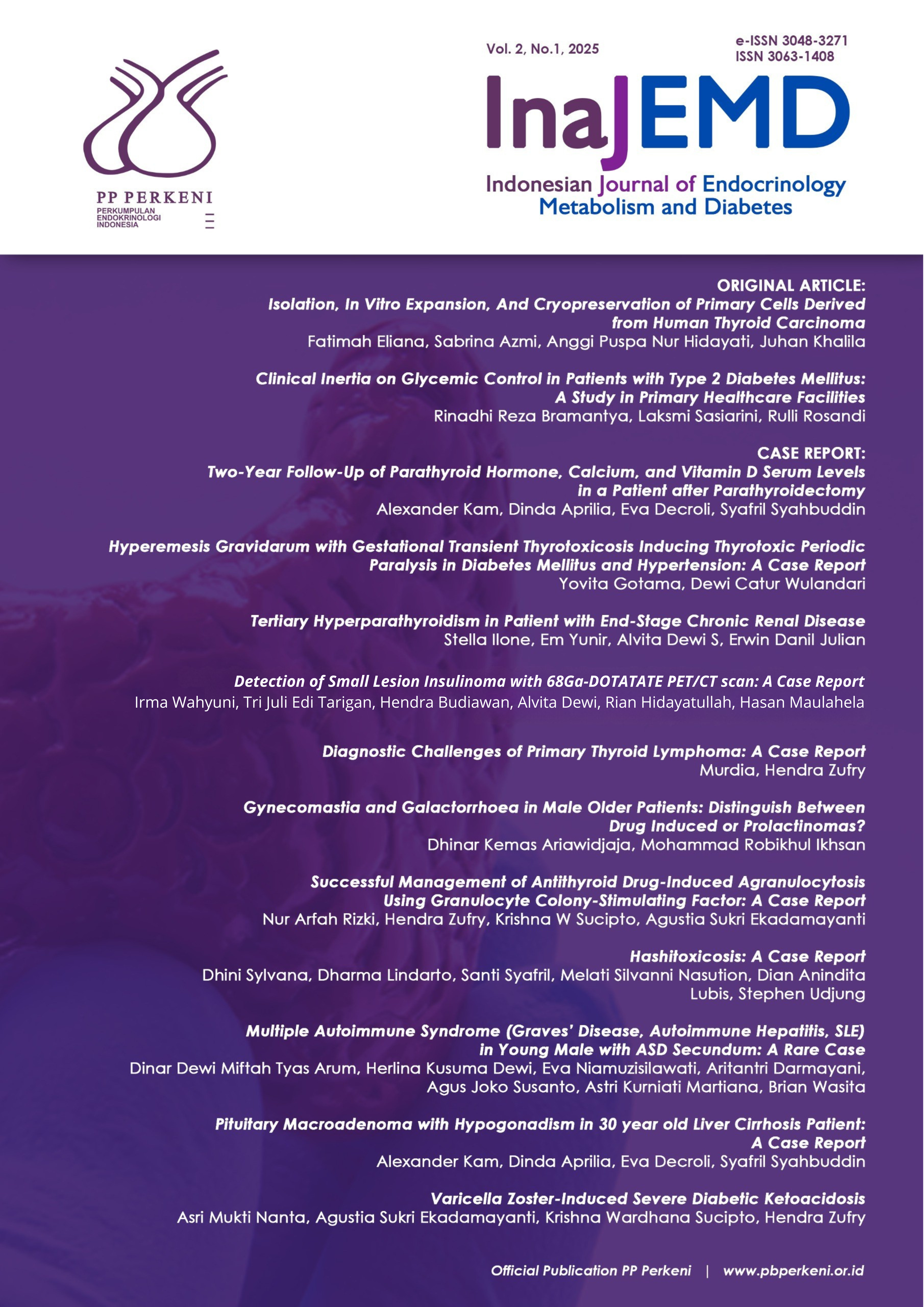Gynecomastia and Galactorrhoea in Male Older Patients: Distinguish Between Drug Induced or Prolactinomas?
Keywords:
Gynecomastia, galactorrhoea, spironolactone, prolactin, digoxinAbstract
Finding the cause of gynecomastia and galactorrhoea can be challenging, hence one of the most important cornerstones is detailed case history. Gynecomastia is an enlargement of the breast in males due to hyperplasia of the glandular tissue. Causes: Physiological (20%) Pathological (30%) Drugs (10-20%) Idiopathic (25%). We report a case of gynecomastia with prolactin disorder and previous use of antihypertensive medication. A 68 year old man, with hypertensive heart disease, controlled on medication (low dose spironolactone 25mg/day, digoxin 0.25mg/day and diltiazem 30 mg three times a day), for the last 12 months; presented with painful swelling and discharge of bilateral breasts for the last 14 days; on examination of both breasts a firm, mobile lump was palpated under the right nipple; blood tests: BUN 12 mg/dL; Creatinine 1.1 mg/dL; TSH 0.57 μIU/ml; LH 12,0 IU/mL; Testosteron 6,41 ng/mL; Estradiol 111,8 pmol/L; Prolactin 87.5 ng/mL. Head MRI was performed; multiple chronic lacunar infarcts, intrasellar and suprasellar were normal and no mass or infection was visible. The probable cause was attributed to spironolactone and digoxin, the medications were stopped; the patient's pain and swelling improved and returned to normal after 2 months of discontinuation, prolactin was assessed at 0.193 ng/mL. Gynecomastia due to spironolactone has many mechanisms: blockade of androgen receptors, prevent binding of testosterone & dihydrotestosterone; decrease testosterone production from testes, increase estrogens by enhancing peripheral conversion of testosterone to estradiol. It has been suggested that digoxin binds to the estrogens receptor and may directly stimulate breast tissue proliferation, inducing gynecomastia. Spironolactone is known to cause gynecomastia; there are very few case reports of digoxin-induced gynecomastia. No other evidence of prolactinoma in this case. It is important for the clinician to keep this in mind; although low doses combination between spironolactone and digoxin may cause gynecomastia.
Downloads
Downloads
Published
Issue
Section
License
Copyright (c) 2025 Journal

This work is licensed under a Creative Commons Attribution-NonCommercial-NoDerivatives 4.0 International License.
Authors retain copyright and grant the Indonesian Journal of Endocrinology, Metabolism and Diabetes (InaJEMD) the right of first publication with the work simultaneously licensed under a Creative Commons Attribution-NonCommercial-NoDerivatives 4.0 International License (CC BY-NC-ND 4.0) that allows others to share the work with an acknowledgement of the work's authorship and initial publication in this journal.
© Indonesian Journal of Endocrinology, Metabolism and Diabetes (InaJEMD). Published by the Indonesian Society of Endocrinology (PERKENI).





